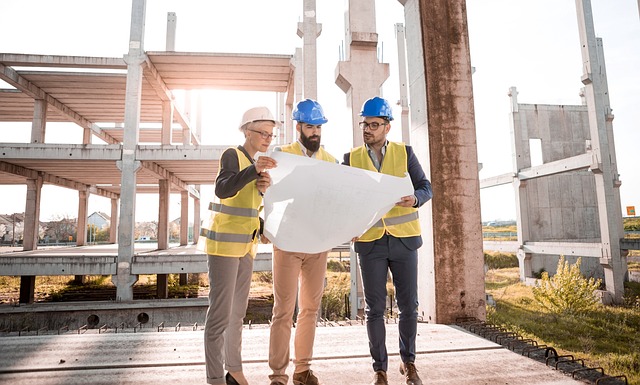The Influential Role of Architects in Designing the Future of Society
Did you ever wonder who decides our environments' appearance and functionality? Who conjures up visions for the infrastructure that shapes our societies? What role do architects play, not just in the design of individual structures, but in the broader context of entire landscapes? In this blog post, we'll delve into this fascinating topic, exploring the crucial role that architects play in shaping societies' future. By molding and manifesting our environments, architects bear a significant influence over aspects of human life, ranging from social interactions and commuting routines to environmental sustainability and cultural preservation.
Architecture is more than just construction; it's a form of art, an expression of societal values, a testament to technological advances, and a reflection of the times. Behind every built environment is an architect, or a team of architects, whose visions and ideas are manifested in walls, windows, and walkways. Their work not only paves the path of societal progression but continually influences the rhythm of life within those societies.
In this post, we'll unpack the charm and challenges of architecture. We'll map out how architects influence society through sustainable design, changing climates, cultural preservation, and social inclusion, underlining the remarkable ways these talented individuals shape the cracks and crevices of our day-to-day lives.

Architects as Stewards of Sustainability
The point where environmental consciousness and architectural ingenuity intersect births the concept of green architecture. Architects are increasingly taking the helm in the shifting tides towards sustainability. They are catalyzing crucial changes via sustainable design, aiming to minimize the negative environmental impact of buildings.
Through the use of energy-efficient systems, natural material sourcing, waste reduction, and sustainable construction techniques, architects sweep the path to a greener, more sustainable future. They are thought leaders in the charge against climate change, enabling living conditions that respect, understand, and encourage a more harmonious relationship with nature.
Architectural initiatives like green roofs, rain gardens, and solar panel installations are rapidly becoming ubiquitous elements of modern developments. These are not just attempts to build eco-friendly structures – they are a concrete step towards reshaping society’s relationship with the environment.
Architects in the Face of Climate Change
When we think of climate change, architecture might not be the first thing that comes to mind. But architects, with their potent combination of creativity and technical know-how, have a key role in catalyzing the global response to this mammoth challenge.
Earthquakes, typhoons, floods, and rising sea levels are prompting architects worldwide to rethink traditional design principles. Architects are turning their creative powers towards designing built environments that are not just resilient against climate change-induced disasters but can also help mitigate them.
The rise of amphibious architecture and floating buildings, for instance, demonstrates a novel architectural response to the global water crisis. Innovations like these highlights how architects are capable of turning climate adversities into opportunities for reimagining our built environments.
You Must Watch: Exploring the Role and Importance of a Building Designer
Preserving Cultural Heritages
Architects play an essential role in the preservation of our cultural at the crossroads of history and innovation. They aim to protect, restore, and revitalize historical structures, ensuring that we don't lose our connection to the past in our race towards the future.
Preservation architecture is a delicate dance of respecting tradition while simultaneously accommodating modern needs and technologies. This balance sustains the tangible cultural heritage of our societies, while signifying how architecture can act as a conduit between the past, present, and future.
Promoting Social Inclusion through Architecture
Architectural designs impact our ability to engage, socialize, and cooperate as communities. Inclusive designs reflect a society that is equally accessible and welcoming to all its members, regardless of their physical or cognitive abilities.
Urban developments, housing projects, and public buildings are becoming more handicap-friendly, respectful of the aging population, and increasingly child-centric. This shift in architectural thinking promotes social inclusivity, fostering environments that encourage unity, respect, and belonging.

The Challenges and Opportunities of Future Architecture
With pressing responsibilities come profound challenges and opportunities. Architects must continually inform themselves about technological advances, sociopolitical changes, emerging trends and demands, and new understandings of human needs.
While this can seem daunting, these challenges represent an opportunity for architects to really influence the future of societies worldwide. Through their designs, they can shape and shift the narratives of our cities, towns, and individual buildings, breathing fresh life into the world we inhabit.
Conclusion:
In conclusion, architects play an irreplaceable, influential role in shaping the world we live in. Their designs bear far-reaching implications extending beyond the physical aspects of our environments, influencing our social interactions, cultural bearings, and environmental relationship. Architects are our silent guides to a sustainable, inclusive, and culturally rich future. They are the wizards behind the curtain, spinning visions into realities, and facilitating an ongoing dialogue between societies and their environments. This dance of creativity and responsibility continually unfolds in the shadowy labyrinths of architectural endeavours, trodden silently by the unsung heroes of social growth – our architects.






No comments